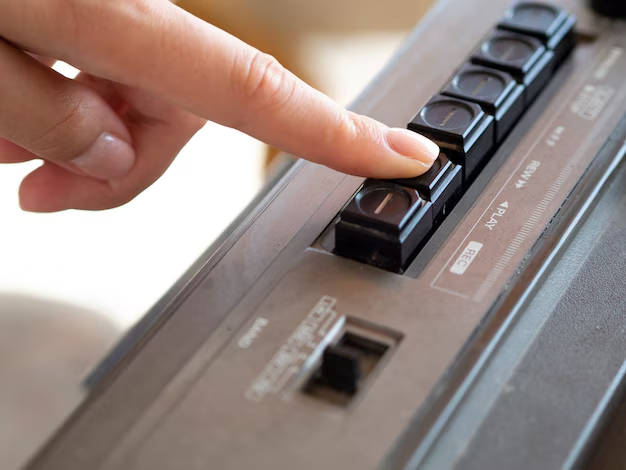How to Safely Force Your Samsung Refrigerator Fan to Defrost
Picture this: you've just returned home from a grocery run, eager to replenish your Samsung refrigerator with fresh produce and essentials, only to notice an unsettling layer of frost building up inside. Frustrating, isn't it? If this scenario feels all too familiar, you're not alone. Frost accumulation is a common issue that can impede your refrigerator's optimal performance. While frost issues affect many refrigerator models, forcing the defrost mode can help alleviate the problem, particularly in Samsung refrigerators. Let's dive into how you can effectively and safely force your Samsung refrigerator fan to defrost.
Understanding Frost Build-Up in Samsung Refrigerators
Why Does Frost Build-Up?
Frost buildup in a freezer compartment is typically due to excess moisture that condenses and freezes on the evaporator coils. This can occur for various reasons:
- Temperature fluctuations: Opening the refrigerator door frequently allows warm air to enter, which can condense and freeze.
- Improper sealing: A faulty door seal allows external air to infiltrate the cooling compartment, increasing moisture levels.
- Refrigerator settings: Incorrect temperature settings might lead to increased condensation.
Impact of Frost on Refrigerator Performance
Excessive frost can lead to inefficient operation of your refrigerator by insulating the evaporator coils, which interferes with the cooling process. This can result in:
- Higher energy consumption: The fridge has to work harder to maintain the set temperature.
- Reduced storage space: Frost can take up valuable space meant for food.
- Cooling inefficiency: It takes longer for your items to reach the desired temperature.
Steps to Manually Defrost Your Samsung Refrigerator Fan
Before You Begin
Make sure to follow these preparatory steps before forcing a defrost:
- Safety first: Unplug your refrigerator to prevent electrical shock.
- Empty the fridge: Transfer perishable items to a cooler with ice for temporary storage.
- Gather necessary tools: A cloth and towels are useful for cleaning and catching drips.
How to Force Defrost Mode
Access Control Panel: Locate and press the Power Freeze and Fridge buttons at the same time for about 8 seconds. This varies slightly by model, so consult your manual.
Initiate Defrost Mode: Release the buttons after a few seconds. You should hear a beep indicating the defrost mode has started.
Select DEF Option: If the test mode options appear, select the DEF option on the panel to start the forced defrost cycle.
Monitor the Process: The defrost mode usually runs for about 20-30 minutes, ensuring that the evaporator coil melts off the accumulated frost.
End Defrost Cycle: After it has completed, your Samsung fridge will automatically resume its normal operations.
Remember, forcing manual defrosting is a temporary fix. Investigate potential root causes for why frost is accumulating to address leaks or faulty components.
Preventing Future Frost Issues
Proper Maintenance Tips
Implementing preventive measures helps curb frost buildup:
- Check door seals: Ensure seals are clean and intact. Replace damaged seals to prevent unwanted airflow.
- Moderate usage: Limit opening the door multiple times or keeping it open for prolonged periods.
- Temperature monitoring: Keep an eye on refrigerator and freezer temperature settings. Ideally, the fridge should be at or below 40°F, while the freezer should remain at 0°F.
Regular Cleaning
Keep the refrigerator and freezer compartments clean. Accumulated spills and debris can contribute to obstructing airflow, which may result in frost buildup:
- Wipe interiors: Use a mild cleanser or vinegar solution to clean surfaces monthly.
- Clean condenser coils: Ensure that dust doesn't accumulate on the coils behind or underneath the fridge.
Troubleshooting Common Frost-Related Issues
Door Seal Troubles
If frost continuously forms around the door area:
- Seal inspection: Examine the gasket condition; loose or cracked gaskets should be replaced.
- Test with paper: Place a thin sheet of paper on the seal, close the door, and gently try to pull it. Strong resistance confirms an effective seal.
Thermostat Problems
Thermostat malfunctions can result in incorrect temperature settings:
- Thermostat location: Locate the thermostat and manually adjust the dial. If unresponsive, it might need replacement.
Defective Defrost Timer or Heater
If defrost cycles frequently fail:
- Listen for clicks: A functional defrost timer produces clicking sounds.
- Examine the heater: Open the panel covering the coils and inspect the heater. If damaged or broken, consider a replacement.
A Quick Summary of Key Takeaways
Here's a bullet-point list of essential tips and practices for managing frost buildup in your Samsung refrigerator:
- 🧊 Regular defrosting: Engage manual defrost mode when necessary but not excessively.
- 🔄 Ensure circulation: Don't overcrowd the refrigerator; maintain airflow around stored items.
- 🚪 Keep it sealed: Routinely check for intact seals and gaskets to prevent air leaks.
- 📉 Optimal settings: Keep temperatures consistent and avoid rapid fluctuations.
- 🔍 Periodic inspection: Regularly inspect core components like timers and heaters; replace faulty parts promptly.
Managing frost issues properly can extend the lifespan of your Samsung refrigerator and keep it running at peak efficiency. By taking the necessary precautions and being attentive to potential root causes, you can enjoy well-preserved food without the hassle of persistent frost buildup. Always remember that consulting with a professional technician is prudent when troubleshooting steps do not resolve the problem.
